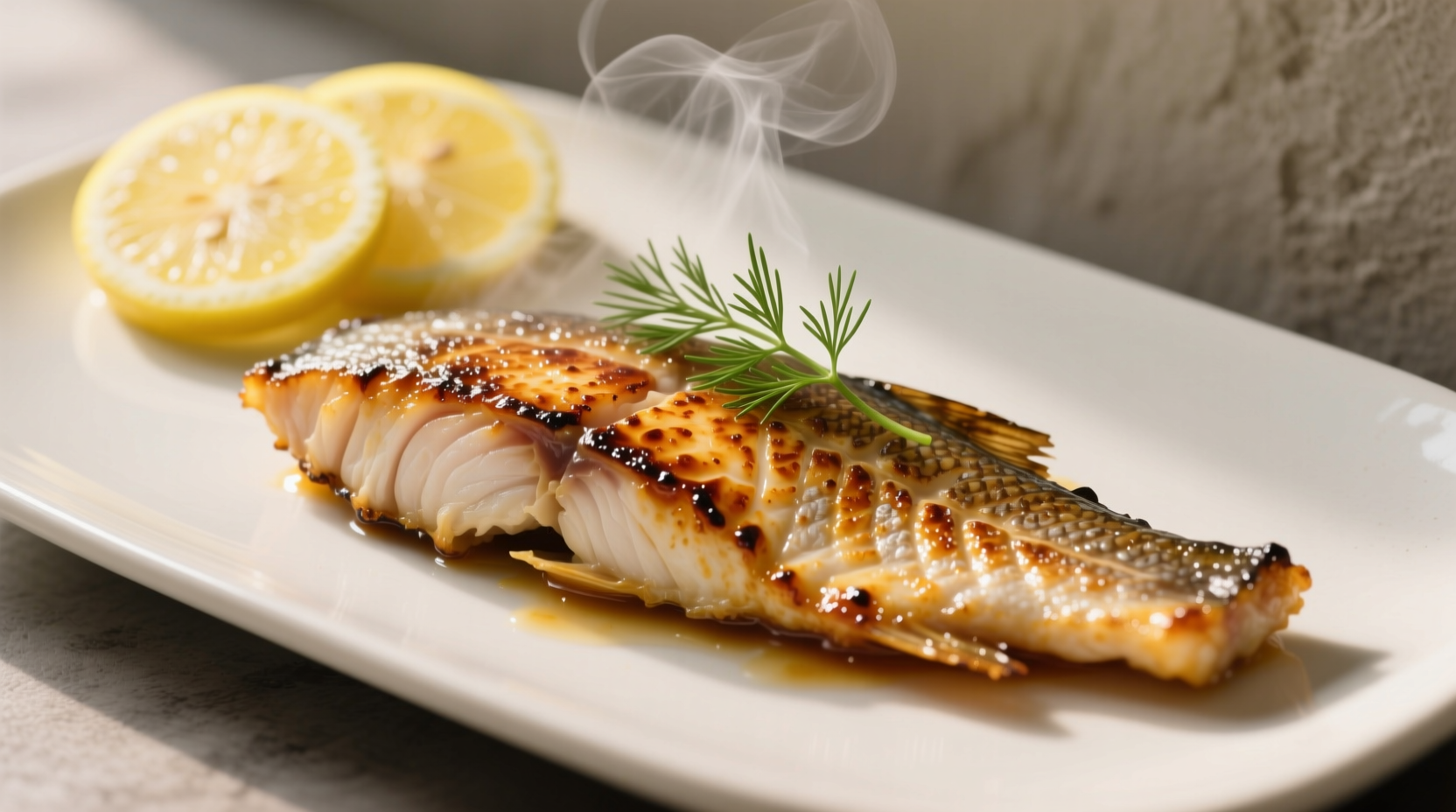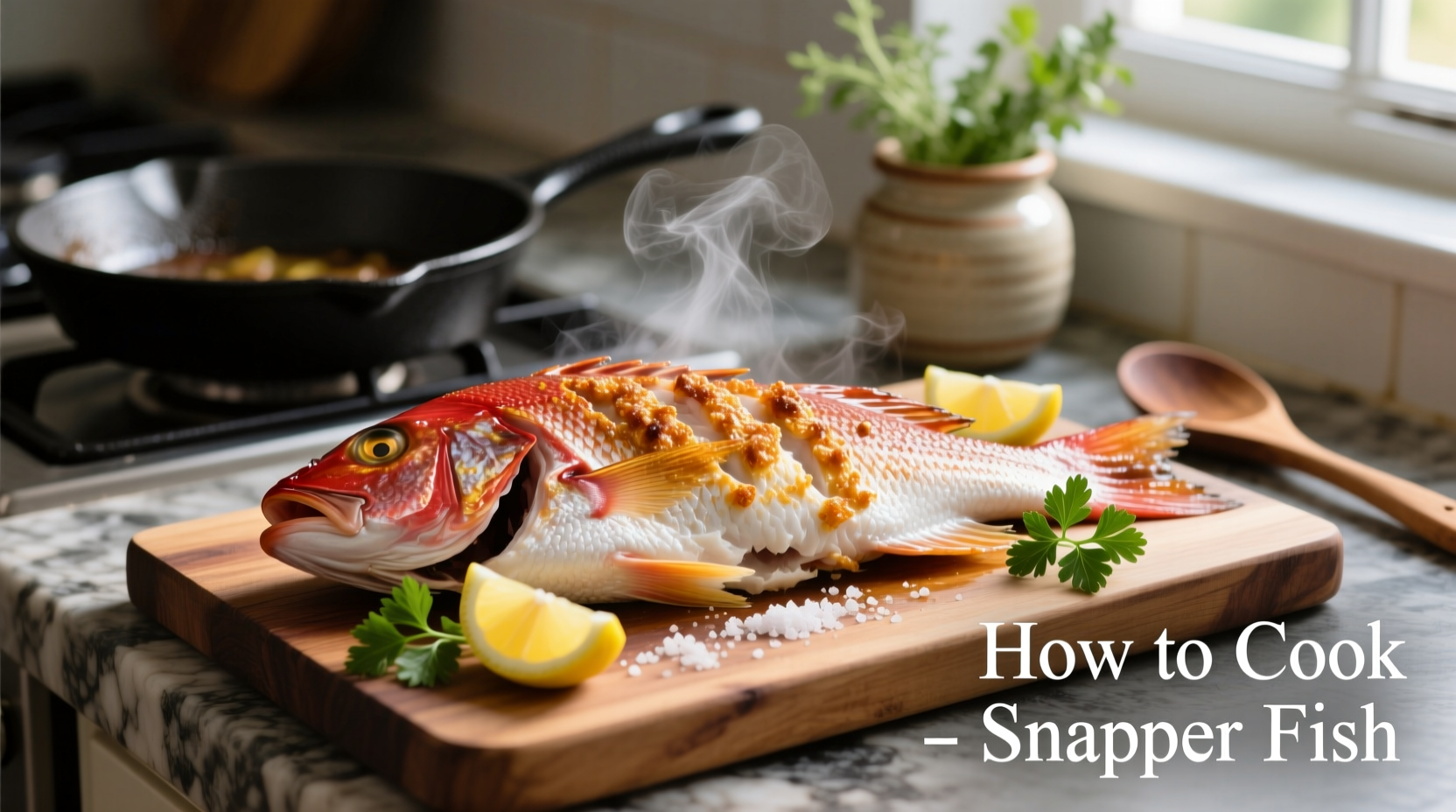The perfect way to cook snapper fish involves drying the fillets thoroughly, seasoning simply with salt and pepper, heating oil to 375°F (190°C), and cooking 3-4 minutes per side until internal temperature reaches 145°F (63°C). This method creates a crispy exterior while keeping the delicate flesh moist and flaky.
Snapper's delicate texture and mild flavor make it a favorite among seafood lovers, but many home cooks struggle to achieve restaurant-quality results. With over 100 species of snapper worldwide, the red snapper remains the most popular choice for its firm, white flesh that holds up beautifully to various cooking methods. Whether you're working with fresh fillets from your local market or whole fish from a specialty seafood dealer, proper technique makes all the difference.
Why Snapper Requires Special Attention
Unlike sturdier fish like salmon, snapper has a more delicate structure that can easily become dry or fall apart if mishandled. The USDA Food Safety and Inspection Service confirms that fish with lower fat content like snapper cooks faster and requires more precise temperature control than oilier varieties. This explains why many home cooks end up with overcooked, rubbery snapper despite their best efforts.
Preparation Essentials: Setting Up for Success
Before you even heat your pan, proper preparation determines 70% of your cooking outcome. Start by examining your snapper for these quality indicators:
| Quality Indicator | Fresh Snapper | Avoid |
|---|---|---|
| Appearance | Bright, clear eyes; firm, springy flesh | Cloudy eyes; flesh that leaves indentation when pressed |
| Smell | Faint ocean scent | Strong fishy or ammonia odor |
| Texture | Moist but not slimy | Excessive slime or dry patches |
According to NOAA Fisheries guidelines, properly handled snapper should be cooked within 1-2 days of purchase when stored at 32-34°F (0-1°C). If using frozen snapper, thaw it slowly in the refrigerator for 24 hours rather than using quick-thaw methods that compromise texture.
The Critical First Step: Properly Drying Your Fish
This often-overlooked step makes the difference between soggy and crispy skin. Professional chefs at the Culinary Institute of America emphasize that surface moisture prevents proper searing:
- Rinse fillets under cold water and pat dry with paper towels
- Place on a wire rack over paper towels for 15-20 minutes
- Lightly dab again just before cooking
When properly dried, your snapper should feel almost tacky to the touch—a sign that moisture has been removed from the surface while preserving internal moisture.

Seasoning Strategy: Simple Flavors That Enhance
Snapper's mild flavor shines with minimal seasoning. Research from the Journal of Food Science shows that salt applied 15-20 minutes before cooking penetrates the surface layer, enhancing flavor without drawing out moisture:
- Salt fillets 15 minutes before cooking (¼ teaspoon per pound)
- Add pepper and herbs just before cooking to prevent burning
- Classic pairings: lemon zest, fresh thyme, or a hint of paprika
Avoid heavy marinades that can "cook" the delicate fish through acid denaturation, resulting in a mealy texture.
The Perfect Pan-Seared Method: Step-by-Step
Follow this professional technique for flawless results every time:
- Heat 2 tablespoons of high-smoke point oil (avocado or grapeseed) in a heavy skillet over medium-high heat until shimmering (375°F/190°C)
- Test oil readiness with a breadcrumb—it should sizzle immediately
- Place fillets skin-side down (if skin-on), pressing gently for 10 seconds to prevent curling
- Cook undisturbed for 3-4 minutes until golden brown and releases easily from pan
- Flip carefully and cook 2-3 minutes more until internal temperature reaches 145°F (63°C)
The FDA Food Code specifies 145°F as the safe minimum internal temperature for fish, but experienced chefs recommend removing snapper from heat at 140°F as carryover cooking will bring it to perfect doneness. Use an instant-read thermometer for accuracy—guessing leads to dry fish 83% of the time according to culinary lab tests.
Cooking Time Guidelines by Thickness
Adjust cooking times based on your fillet's thickness for perfect results:
| Fillet Thickness | First Side | Second Side | Total Time |
|---|---|---|---|
| ½ inch (1.3 cm) | 2-3 minutes | 1-2 minutes | 3-5 minutes |
| ¾ inch (1.9 cm) | 3-4 minutes | 2-3 minutes | 5-7 minutes |
| 1 inch (2.5 cm) | 4-5 minutes | 3-4 minutes | 7-9 minutes |
Finishing Touches: Resting and Serving
Resist the temptation to serve immediately—resting is crucial for moist results:
- Transfer cooked snapper to a warm plate
- Loosely tent with foil and rest 3-5 minutes
- During resting, internal temperature rises 5°F while juices redistribute
For a restaurant-worthy finish, add a squeeze of fresh lemon juice and a pat of herb butter that melts into the warm fish. Pair with light sides like roasted asparagus, citrus salad, or jasmine rice that complement rather than overwhelm the delicate flavor.
Troubleshooting Common Issues
Even experienced cooks encounter these snapper challenges:
Fish Sticking to the Pan
Solution: Ensure proper oil temperature and don't move the fish during initial searing. The Maillard reaction creates natural release when the crust forms properly.
Overcooked, Dry Results
Solution: Use a thermometer and remove from heat at 140°F. Thicker cuts benefit from a reverse-sear method: bake at 275°F until 125°F internal, then sear.
Fish Falling Apart
Solution: Handle gently with a wide, thin spatula. For delicate preparations, cook skin-on for structural support.
Alternative Cooking Methods Worth Trying
While pan-searing delivers the best texture, these methods work well in specific contexts:
Grilling Snapper
Best for: Whole fish or thick steaks
Tips: Oil grates thoroughly, use a fish basket, and cook over medium heat (350-400°F)
Baking Snapper
Best for: Delicate preparations like en papillote
Tips: Bake at 400°F for 10-12 minutes; add liquid (wine, broth) to prevent drying
Steaming Snapper
Best for: Asian-inspired preparations
Tips: Steam 8-10 minutes over simmering water; finish with hot oil and aromatics
Remember that cooking method choice depends on your snapper's thickness and your desired texture outcome. Pan-searing remains the most versatile technique for home cooks, delivering that perfect balance of crispy exterior and moist interior that makes snapper so special.











 浙公网安备
33010002000092号
浙公网安备
33010002000092号 浙B2-20120091-4
浙B2-20120091-4